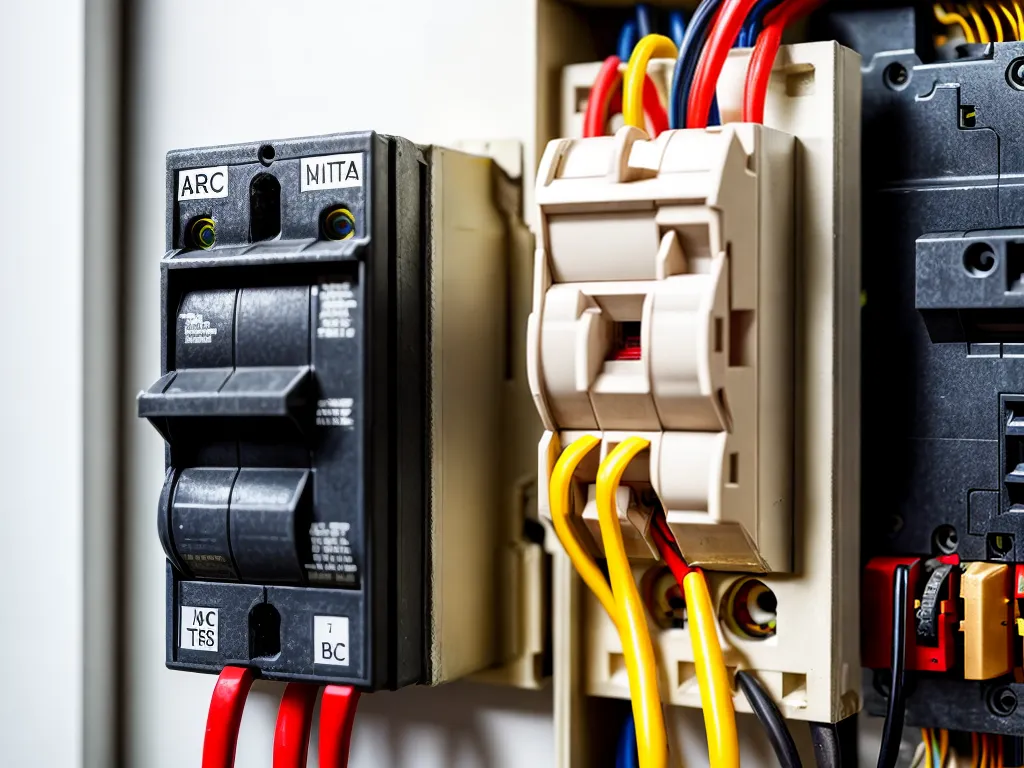
Replacing an arc-fault circuit breaker without hiring an electrician is totally doable for a handy homeowner. While electrical work can seem daunting, replacing a circuit breaker is one of the simpler tasks. With proper precautions and following steps, you can safely change it out yourself.
Understanding Arc-Fault Circuit Breakers
Arc-fault circuit breakers (AFCIs) are a special type of circuit breaker that helps prevent electrical fires. They monitor the electrical current on a circuit and will trip if they detect potentially dangerous arc faults.
Some key facts about AFCIs:
- AFCIs became part of the electrical code in 1999 and are now required in new construction.
- They provide protection that standard breakers don't. Arcing is when electricity jumps between connections and can lead to overheating and fires.
- AFCIs can prevent over 50% of home electrical fires according to Consumer Reports.
- They are usually installed to protect bedroom circuits but can be installed anywhere.
Replacing an arc-fault circuit breaker is very similar to a standard breaker. The main differences are verifying it is compatible and reconnecting the wiring properly.
Gather Materials Needed
Before starting, gather all the materials and tools you will need:
- Replacement AFCI circuit breaker - Make sure it is the same amperage (15 amps, 20 amps) and matches number of poles (single or double) as the old one.
- Voltage tester - To confirm power is off before working.
- Screwdrivers - Both Phillips and flat head.
- Needlenose pliers - Helpful for connecting wires.
- Flashlight - To see inside electrical panel.
- Circuit breaker label - To identify purpose of circuit.
Safety gear like gloves and eye protection are also recommended.
Make sure to switch off the main circuit breaker to cut power before beginning work.
Removing the Old Breaker
With the power verified off, you can now remove the old AFCI breaker:
- Locate it in the panel - They are usually labeled "AFCI".
- Take a photo of the wiring - For reference when reconnecting.
- Disconnect the wires - There may be multiple wires attached.
- Unscrew the breaker - Use a screwdriver to release it from the panel.
- Remove it from the panel - Pull it straight out once detached.
With the old one removed, take a minute to clean up any dust or debris in the panel box before continuing.
Installing the New Breaker
Time to put in the new replacement AFCI breaker:
- Position it in the open slot - Line up the tabs and guide it in.
- Tighten the screw - Secure it to the panel with a screwdriver.
- Connect the wires - Match the previous wiring exactly.
- Double check connections - Tug wires to ensure tight fit.
- Label the breaker - Clear identification helps avoid confusion.
Carefully follow the manufacturer instructions if provided. Take your time and be meticulous to avoid wiring errors.
Restoring Power and Testing
You're in the home stretch now:
- Flip main breaker back on - Restore power to the panel.
- Turn on AFCI breaker - Switch it to the "on" position.
- Check the circuit - Verify outlets and lights function properly.
- Press test button - Confirms proper trip mechanism.
- Consider labeling panel - Note "DIY Replace" and date for future reference.
If the AFCI trips immediately, consult the troubleshooting section in the user manual. A minor wiring issue is likely.
Staying Safe When Replacing an AFCI
When DIYing electrical work, safety should always come first:
- Turn off power fully - At the main breaker, not just the individual circuit.
- Verify it's deactivated - Use a multimeter or voltage tester pen.
- Work carefully - Slow down and be cautious. Rushing leads to mistakes.
- Ask for help if unsure - Consult an electrician if you don't feel confident.
- Follow code requirements - Only replace with an identical or equivalent AFCI.
Replacing an arc-fault circuit breaker is well within the abilities of many homeowners if proper precautions are taken. Following these guidelines closely will allow you to change it out safely without an electrician.